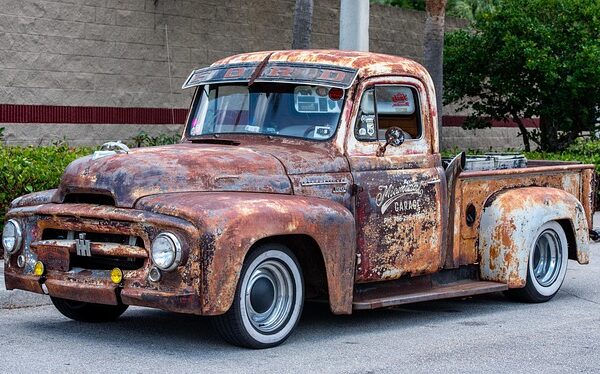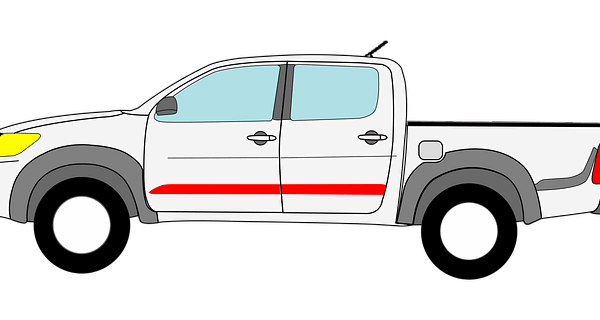Select Pickup Trucks: A Comprehensive Exploration
Introduction
Welcome to an in-depth journey into the world of select pickup trucks, a segment of the automotive industry that has captured the attention of enthusiasts, businesses, and policymakers alike. This article aims to dissect and analyze various facets of these versatile vehicles, offering insights for both industry professionals and curious individuals. From their historical evolution to modern technological leaps, we will navigate through the landscape of select pickup trucks, exploring their global impact, economic significance, and the challenges they face in an ever-changing market.
Understanding Select Pickup Trucks
Definition and Core Features
Select pickup trucks, often simply referred to as ‘pickup trucks’ or ‘work trucks’, are a specific category of light commercial vehicles designed with versatility and utility at their core. They typically feature a distinct boxy body structure with an open-bed design, allowing for the transport of various cargo types. The essential components include:
- Body Structure: A robust frame supports the cab and bed, offering strength and stability.
- Cargo Bed: The rear compartment, designed to carry goods, tools, or equipment, often includes features like tailgates, ramps, and tie-down points.
- Cab: The driver’s compartment provides comfort and control, with various configurations for seating capacity and instrumentation.
- Power Systems: These trucks are known for their powerful engines, offering excellent towing and hauling capabilities. They can be equipped with gasoline, diesel, or hybrid powertrains.
Historical Context and Evolution
The concept of pickup trucks has deep roots in the American automotive landscape, dating back to the early 20th century. Initially designed as farm and work vehicles, they evolved to cater to a broader market, becoming a symbol of versatility and freedom. Key milestones include:
- 1908: The Ford Model T, often considered the first mass-produced automobile, inspired the idea of affordable and adaptable vehicles.
- 1930s: General Motors introduced the ‘Standard Cab’ pickup, popularizing the design and making it accessible to a wider range of buyers.
- Post-WWII Era: Pickup trucks gained popularity as a means of post-war reconstruction, leading to increased production and innovation.
- Late 20th Century: The segment saw a surge in customization options, with manufacturers offering various body styles, engines, and features to cater to diverse customer needs.
Significance and Market Positioning
Select pickup trucks hold a unique position in the automotive industry:
- Versatility: They serve as workhorses for businesses, contractors, and individuals who require hauling or towing capabilities.
- Global Appeal: With modifications, these trucks adapt to various terrains and climates, making them popular worldwide.
- Cultural Icon: In many regions, pickup trucks represent a way of life, reflecting personal freedom and practicality.
- Market Dynamics: The segment contributes significantly to automakers’ sales figures and has a substantial global market share.
Global Impact and Trends
International Influence
The reach of select pickup trucks extends far beyond their birthplace, with significant adaptations and variations across regions:
| Region |
Key Adaptions |
Market Dynamics |
| North America |
Full-size pickups with powerful V8 engines are popular. |
Dominant market share for Ford, Chevrolet, and Ram. Strong demand for truck camping and off-road capabilities. |
| Europe |
Smaller, more fuel-efficient models dominate. |
Increasing sales of electric pickup trucks (e.g., Tesla Cybertruck). Focus on safety and advanced driver-assistance systems (ADAS). |
| Asia |
Compact, affordable pickups cater to urban populations. |
Rapid growth in sales, with manufacturers like Toyota and Ford expanding their offerings. |
| South America |
Pickups are versatile workhorses, often adapted for off-road use. |
Local brands like Ford and Volkswagen hold significant market share. |
Shaping Trends
Global trends influencing the select pickup truck market include:
- Electric Revolution: The shift towards electric vehicles (EVs) is evident, with manufacturers investing heavily in battery technology and advanced electric pickups.
- Autonomous Features: Advanced driver assistance systems are becoming standard, enhancing safety and offering connected features.
- Customization: Customers demand unique styling and personalization options, leading to a rise in aftermarket modifications.
- Multi-Terrain Capabilities: As off-road enthusiasts grow, trucks are being designed with improved ground clearance, all-wheel drive, and specialized tires.
Economic Considerations
Market Dynamics and Investment
The select pickup truck market exhibits dynamic characteristics:
- High Demand: These vehicles enjoy consistent demand due to their versatility and utility, ensuring robust sales figures.
- Manufacturer Strategies: Automakers invest heavily in research and development, launching new models with advanced features to capture market share.
- Price Variations: Full-size and luxury pickups tend to have higher price points, while compact models offer more affordable options.
- Resale Values: Known for their durability, select pickup trucks often retain significant resale value, attracting used car buyers.
Investment Patterns and Impact
Investment in the sector has substantial implications:
- Manufacturing: The production of pickup trucks drives economic activity in the automotive industry, creating jobs and fostering related industries.
- Supply Chain: From steel producers to tire manufacturers, various suppliers benefit from the demand for these vehicles.
- Infrastructure: The need for hauling and towing capabilities influences the development of supporting infrastructure, such as parking facilities and cargo hubs.
- Consumer Spending: Pickup truck owners tend to spend on accessories, modifications, and services, contributing to local economies.
Technological Advancements
Innovations Shaping the Sector
Technology plays a pivotal role in enhancing select pickup trucks:
1. Electric Power Trains:
- Advantages: Environmental benefits, reduced operational costs, and improved performance.
- Examples: Tesla’s Cybertruck, Ford F-150 Lightning, offering extended ranges and fast charging capabilities.
2. Advanced Safety Features:
- Impact: Enhancing driver confidence and reducing accidents.
- Implementations: Automated emergency braking, lane-keeping assist, blind spot monitoring, and adaptive cruise control.
3. Connectivity and Infotainment:
- Benefits: Enhanced driver experience, navigation, and remote vehicle management.
- Features: Large touchscreens, Apple CarPlay/Android Auto integration, and over-the-air software updates.
4. Autonomous Driving Technologies:
- Future Potential: Improved safety and efficiency on highways and off-road trails.
- Progress: Advanced driver assistance systems (ADAS) are becoming standard, paving the way for level 2 and level 3 autonomy.
Policy and Regulation
Governance and Influence
Key policies and regulations shape the select pickup truck industry:
- Emission Standards: Governments worldwide enforce strict emission norms, driving the development of cleaner and more efficient powertrains.
- Safety Regulations: Standardized safety tests and rating systems ensure vehicle safety, prompting manufacturers to incorporate advanced safety features.
- Fuel Efficiency Mandates: Incentives and regulations promote the adoption of fuel-efficient technologies, including hybrid and electric powertrains.
- Trade Policies: Import and export tariffs influence the global trade of pickup trucks, affecting prices and availability.
Compliance and Industry Response
Automakers adapt to regulatory changes:
- Emission Compliance: Manufacturers invest in research to meet emission standards while maintaining performance, often employing advanced engine technologies and hybrid systems.
- Safety Enhancements: Regular safety assessments lead to the adoption of cutting-edge safety equipment, ensuring vehicles meet or exceed regulatory requirements.
- Regulatory Collaboration: Industry associations work with governments to provide feedback on proposed regulations, ensuring practical and effective standards.
Challenges and Criticisms
Overcoming Obstacles
The select pickup truck market faces several challenges:
- Environmental Concerns: The industry’s reliance on fossil fuels contributes to emissions, prompting calls for more sustainable practices.
- Safety Criticisms: Despite advancements, some models have faced safety concerns, leading to recalls and improved testing protocols.
- Market Saturation: With numerous options available, consumers may struggle to choose, and manufacturers compete intensely for market share.
- Technological Complexity: As technology evolves, keeping up with advancements and ensuring compatibility can be challenging.
Strategies for Improvement
Proposed solutions include:
- Emission Reductions: Transitioning to electric and hybrid powertrains, investing in fuel cell technology, and improving recycling practices.
- Safety Enhancements: Implementing rigorous testing protocols, promoting safety awareness campaigns, and continuing development of ADAS.
- Sustainable Practices: Adopting eco-friendly materials, efficient manufacturing processes, and circular economy principles.
- Consumer Education: Providing transparent information about vehicle capabilities and limitations to ensure informed purchasing decisions.
Case Studies: Successful Applications
Real-World Examples
Case Study 1: Tesla Cybertruck’s Unconventional Design
Tesla’s electric pickup truck challenges conventional aesthetics with its futuristic design and impressive performance. It has garnered significant attention, demonstrating the potential for electric vehicles to appeal to a broad audience. The Cybertruck’s success lies in its combination of sustainability, cutting-edge technology, and bold styling.
Case Study 2: Ford F-150 and Worksite Efficiency
Ford’s F-150 has become synonymous with pickup trucks, offering an array of configurations to cater to various work needs. Its recent hybrid and electric models showcase the potential for increased efficiency without compromising capability. This case highlights how manufacturers can appeal to both traditional users and environmentally conscious buyers.
Case Study 3: Customization in Action – Overland Vehicles
Overland vehicles, often built on standard pickup truck platforms, exemplify customization at its finest. These off-roaders are designed for extreme adventures, featuring raised suspensions, specialized tires, and enhanced towing capabilities. This case study illustrates the vast potential for personalization within the select pickup truck segment.
Future Prospects
Growth Areas and Emerging Trends
The future of select pickup trucks looks promising, with several growth areas and emerging trends:
- Electric Revolution: The transition to electric power is expected to accelerate, driven by stricter emission norms and consumer demand for sustainable transportation.
- Autonomous Operations: Advances in autonomous driving technology will enable semi-autonomous and fully autonomous pickup trucks, enhancing safety and efficiency.
- Connected Vehicles: Enhanced connectivity features will transform these trucks into mobile offices, offering real-time data and remote control capabilities.
- Personalized Experiences: With the rise of digital customization tools, buyers will have unprecedented control over their truck’s design and features.
- Multi-Use Vehicles: The line between pickup trucks and SUVs may blur, with versatile models catering to both hauling needs and off-road adventures.
Conclusion
Select pickup trucks have evolved from simple work vehicles to multifaceted utilities, reflecting the dynamic nature of the automotive industry. Through technological advancements, global trends, and adaptive designs, these trucks continue to shape our landscapes, businesses, and everyday lives. As we look ahead, the sector faces challenges but also harbors immense potential for growth and innovation.
FAQ Section
Q: Are pickup trucks environmentally friendly?
A: Traditional pickup trucks primarily rely on gasoline or diesel engines, contributing to emissions concerns. However, the rise of electric and hybrid models offers more sustainable alternatives, with manufacturers investing in eco-friendly technologies.
Q: What are some key safety features to look for in a pickup truck?
A: Advanced driver assistance systems (ADAS) such as automatic emergency braking, lane-keeping assist, blind-spot monitoring, and adaptive cruise control significantly enhance safety. Additionally, airbag systems, robust frames, and advanced structural designs play vital roles in protecting occupants.
Q: How do I choose the right pickup truck for my needs?
A: Consider your primary use cases, such as hauling cargo, towing trailers, or off-road adventures. Evaluate power requirements, bed size, cab comfort, and available features. Test drives are essential to assess handling, visibility, and overall practicality.
Q: What is the future of pickup trucks in terms of technology?
A: The future holds immense potential for technological advancements, including electric powertrains, advanced driver assistance systems (ADAS), autonomous driving capabilities, and enhanced connectivity features. These innovations will make pickup trucks safer, more efficient, and more integrated into our digital lives.
Q: Can pickup trucks be customized?
A: Absolutely! Customization is a significant aspect of pickup trucks, allowing owners to personalize their vehicles for specific needs and preferences. From aftermarket accessories to specialized bed configurations, the possibilities are vast, making each truck unique.
Select Pickup Trucks offer powerful engines, safety features, and spacious interiors for affordable daily driving and off-road use. Key considerations include V8 engines, safety systems, infotainment,…….
Long-distance travel requires fuel-efficient select pickup trucks for cost savings and environmental benefits. Hybrid models offer powerful performance with reduced consumption. Modern technologies li…….
When seeking high-capacity select pickup trucks, Ford, Chevrolet, and Ram top the list with powerful engines, advanced tech, and diverse models. Key features include a spacious cargo bed (6.5+ feet),…….
Choosing the right Select Pickup Trucks with powerful engines, AWD, advanced 4×4 systems, high ground clearance, and all-terrain tires is crucial for optimal off-road performance. Prioritize safety, c…….
When selecting pickup trucks, prioritize towing capacity, durable interiors, and versatile bed sizes for construction work. For mixed use, consider family-friendly features. Off-roading enthusiasts sh…….
When choosing a light-duty pickup truck, consider top picks like Ford Ranger and Chevrolet Colorado for balance between capability and comfort. Prioritize fuel efficiency with Toyota Tacoma and Ford R…….
Before buying a truck for towing, identify your specific needs (weight, size, frequency, distance) and consider powerful engines, advanced safety systems, and robust brakes. Research top brands like F…….
When choosing a pickup truck for work, identify specific needs like towing capacity, engine power, fuel efficiency, and safety. Select trucks with V8 engines for hauling heavy loads and modern feature…….
Select Pickup Trucks combine powerful engines, advanced ADAS for safety, and innovative infotainment systems. They offer versatile features like configurable beds and 4WD systems, ideal for work and o…….
Before buying a truck online, define your needs, research key features like payload and towing capacity, explore brands' websites, choose between styles and engines, compare models through review…….









